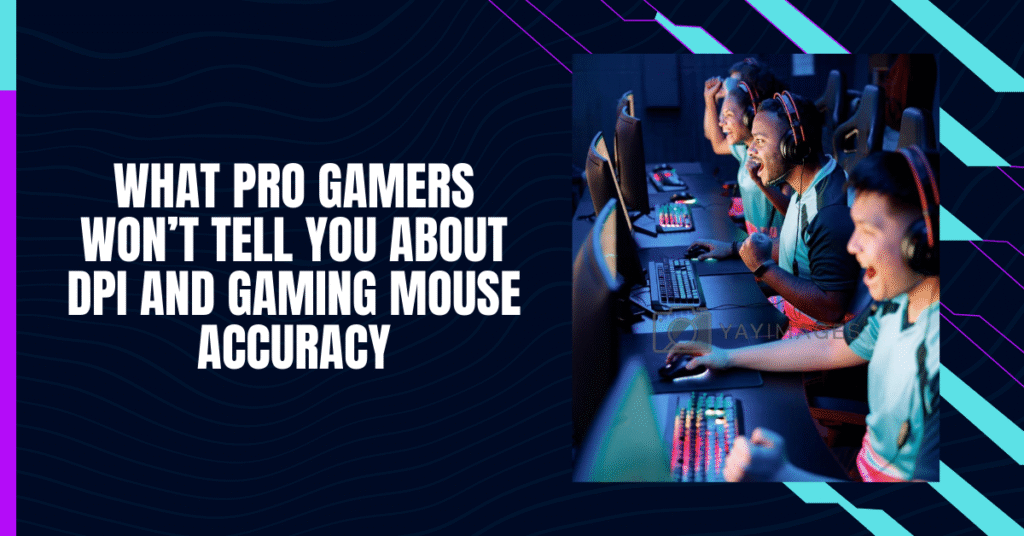Let’s get straight to it: DPI isn’t everything.
You’ve probably heard terms like DPI (dots per inch) tossed around in YouTube reviews or seen flashy numbers on mouse packaging. 10,000 DPI. 20,000 DPI. Sounds like more is better, right? Well, not exactly. That’s where things start to get murky—and where a lot of pros stay quiet.
So today, we’re breaking it down. No fluff, no hype. Just the real deal about DPI, gaming mouse accuracy, and what really matters when you’re lining up that perfect headshot in Valorant or holding an angle in CS2.
The DPI Confusion: Why It Matters (and Doesn’t)
Here’s the issue: DPI is frequently misconstrued. Many gamers associate DPI with accuracy. Crank it up to 16,000 and *boom*, you are an aimbot (or so that is the belief). DPI measures how far your mouse pointer on your screen moves relative to how far your mouse moves on the desk/notepad/whatever it is on. A high DPI will cause your cursor to fly off the screen with the tiniest flick. But does it help you hit shots? Not really.

Real-Life Example: Too Much of a Good Thing
When I finally got a “pro” gaming mouse with 12,000 DPI, I thought I would just have an instant upgrade and would be better at gaming, but was I wrong. Obviously, I was missing shots like I was shooting a shotgun. I found it incredibly hard just to aim at a doorframe for some reason. It was literally like trying to thread a needle in a hurricane.
Then I moved my DPI down to 800, configured my proper sensitivity in the game, and suddenly I felt way more in control! Everything felt smoother and more predictable.
So what was going on with the settings?
The Truth Most Pros Won’t Say
Most pro players use relatively low DPI settings.
Yep. 400 to 800 DPI is the sweet spot for a lot of top-tier players. Combine that with low in-game sensitivity, and you get precision. You get muscle memory. You get consistency.
Why don’t they talk about it? Well, maybe because it sounds too simple. Or maybe the mouse companies don’t want you to know that you don’t need to chase those sky-high numbers.
And get this—many esports pros from Canada to Europe use similar low-DPI setups because it gives them better control in intense matches.
Okay, But Why Does DPI Even Exist Then?
Good question.
DPI still matters, especially if you’re doing more than gaming. Higher DPI can be useful for:
- Ultra-wide or 4K monitors
- Multi-monitor setups
- Design and editing work
In those cases, high DPI helps you glide across the screen without lifting your mouse over and over.
But when it comes to competitive FPS gaming, less is often more.
Mousepad Size Matters Too
If you’re using low DPI and low sensitivity, you’ll need more room to move your mouse. That’s why pros often use large mousepads.
Ever seen a streamer do a big arm-sweep to flick onto a target? That’s what we’re talking about. Bigger mousepad = more space to aim accurately.
For Canadians, a good budget pick is the SteelSeries QcK, which often goes on sale on Amazon.ca or Best Buy.
Is Sensor Type a Big Deal?
To a degree, yes. But most modern gaming mice use very accurate optical sensors.
What really matters is:
- No acceleration
- No prediction
- Smooth tracking
You don’t need the newest, flashiest model. Even a budget mouse with a good sensor will do the trick.
Wired vs. Wireless: The Lag Myth
A lot of gamers still think wireless means lag.
But wireless tech has come a long way. Mice like the Logitech G Pro X Superlight or Razer Viper V2 Pro feel just as fast as wired ones—sometimes faster.
So if you hate cable drag, go wireless. Just make sure it has a strong connection and polling rate.
Final Thoughts: You’re in Control
At the end of the day, the best settings are the settings that make you better.
Forget the influencers and the random number they show you on the screen. Try what you think will work, and pay attention to the feel of it.
And just remember, nobody was ever really good at any video game. Every professional player was bad at the same point too, they just figured out what works and were consistent.
So, the next time someone shows off their 20,000 DPI setup? Just smile, nod, and keep headshotting.
Because now you know what really matters.

Leave a Reply